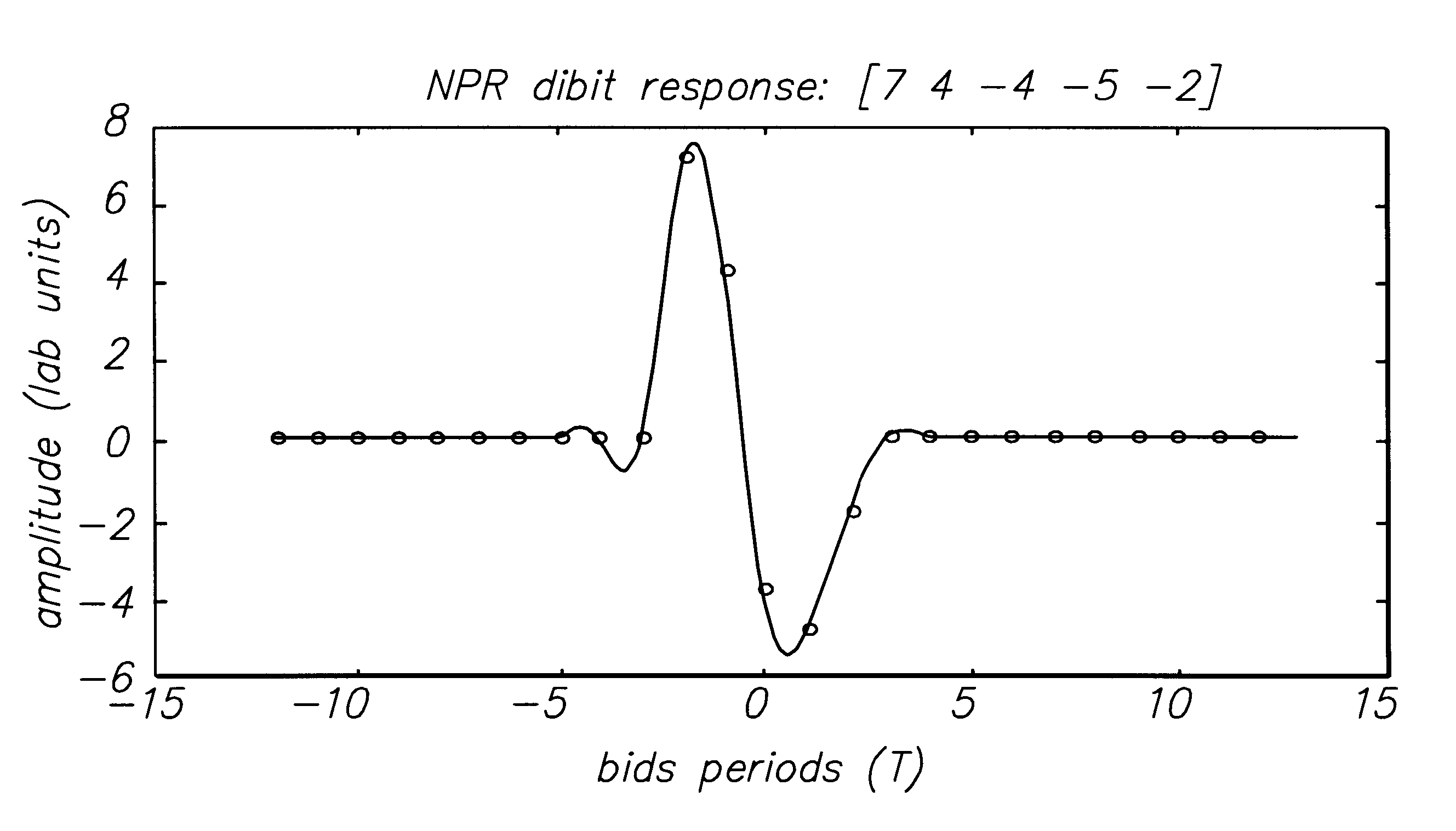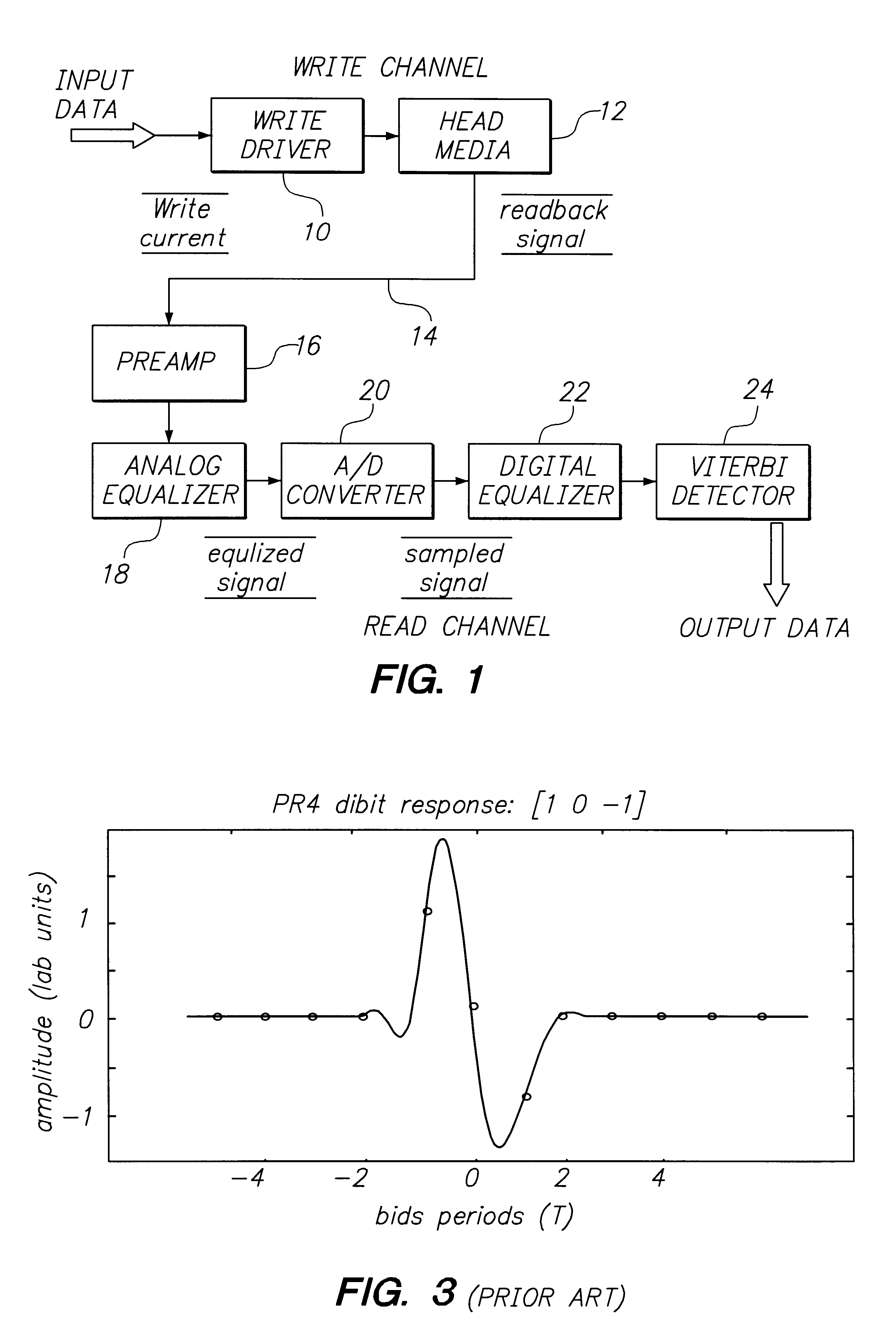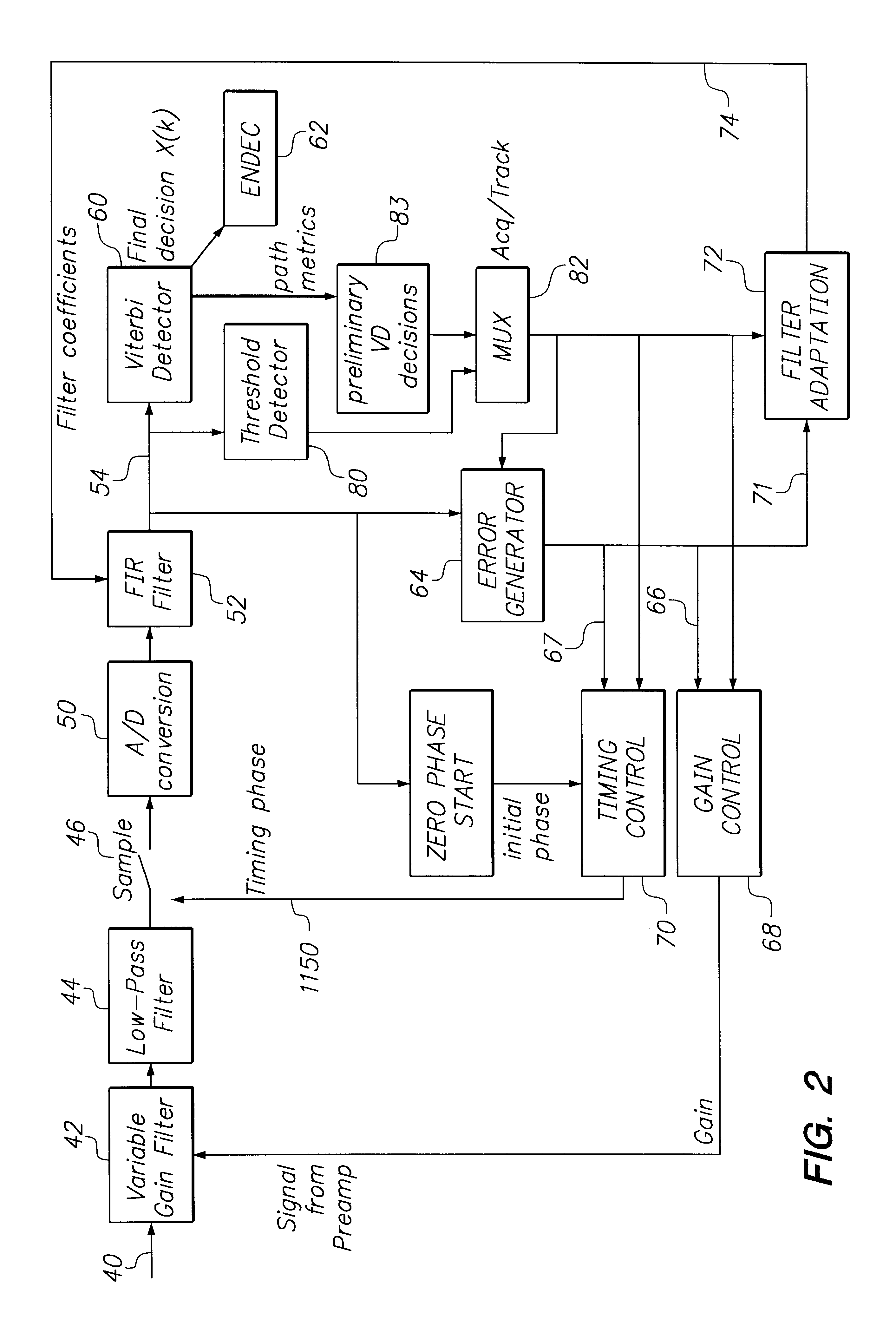Class of fixed partial response targets in a PRML sampled data detection channel
a detection channel and partial response technology, applied in the field of digital data storage technology, can solve the problems of increasing the limitations of drive capacity, reducing the spacing between flux transitions on the medium, and challenging data reading back
- Summary
- Abstract
- Description
- Claims
- Application Information
AI Technical Summary
Problems solved by technology
Method used
Image
Examples
Embodiment Construction
A PRML Disk Drive System
FIG. 1 is a simplified block diagram illustrating the principal building blocks of a magnetic recording and read channel of the type commonly used in a disk drive. In the write channel, user data is encoded using a run length limited (RLL) code, such as RLL (1,7) or RLL (0,4 / 4), the latter providing a ratio of user data to stored data of about 8 / 9. The encoded series of bits are input to write driver circuitry 10 which controls current applied to a write head carried on a slider over the rotating magnetic disk medium 12. The write driver in combination with the write head records the data as a series of magnetic flux transitions on a selected track on the medium. For example, a "1" is represented as a transition and a "0" no transition.
During playback, the read head provides an analog signal responsive to the flux transitions as the data track moves past the head. The analog read signal 14 is input to a preamp 16 and then to analog equalizer circuitry 18. Cir...
PUM
| Property | Measurement | Unit |
|---|---|---|
| magnetic flux | aaaaa | aaaaa |
| sampling frequency | aaaaa | aaaaa |
| relative data density | aaaaa | aaaaa |
Abstract
Description
Claims
Application Information
 Login to View More
Login to View More - R&D
- Intellectual Property
- Life Sciences
- Materials
- Tech Scout
- Unparalleled Data Quality
- Higher Quality Content
- 60% Fewer Hallucinations
Browse by: Latest US Patents, China's latest patents, Technical Efficacy Thesaurus, Application Domain, Technology Topic, Popular Technical Reports.
© 2025 PatSnap. All rights reserved.Legal|Privacy policy|Modern Slavery Act Transparency Statement|Sitemap|About US| Contact US: help@patsnap.com



